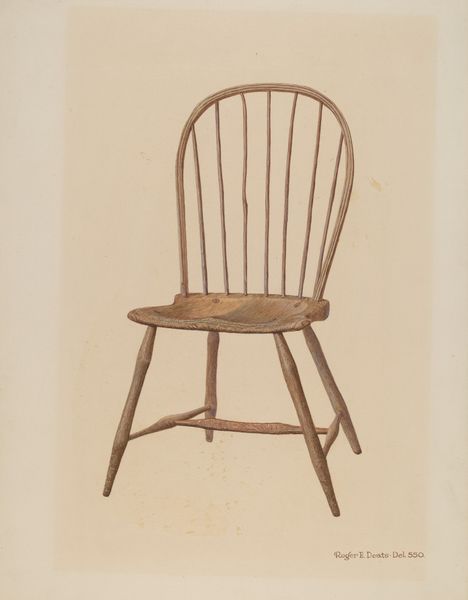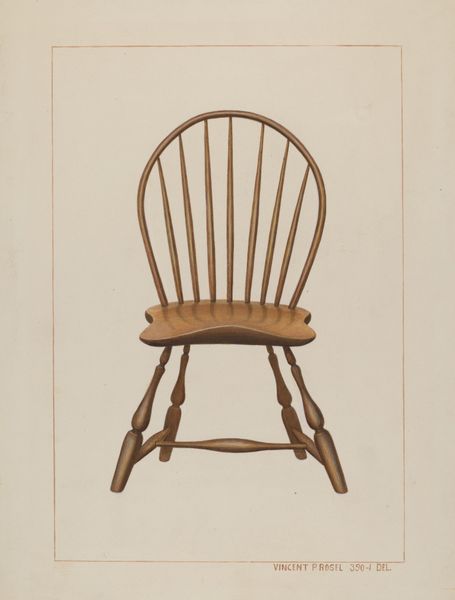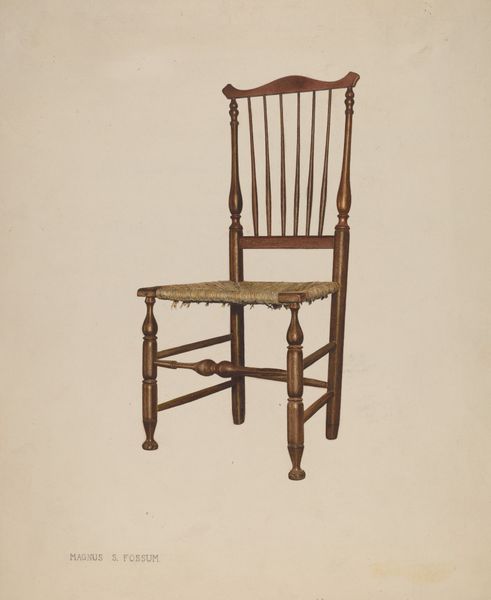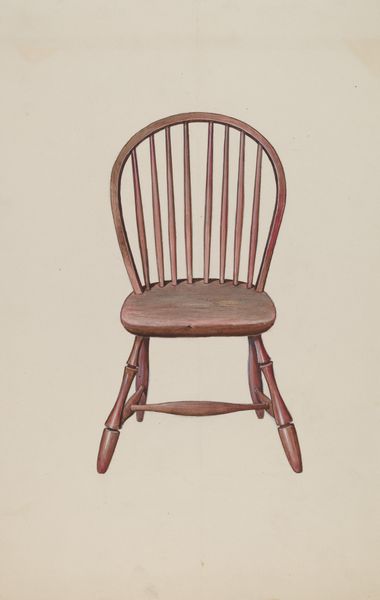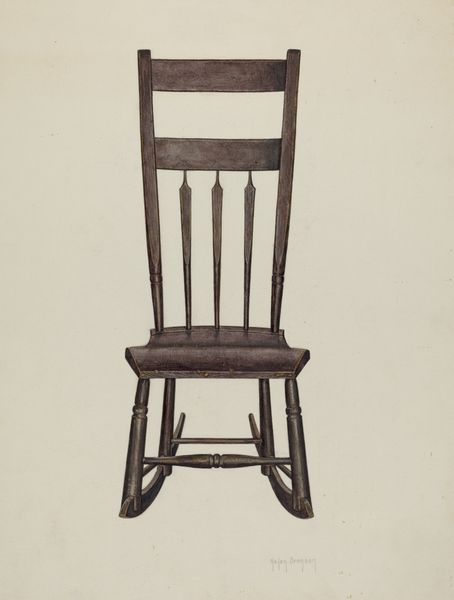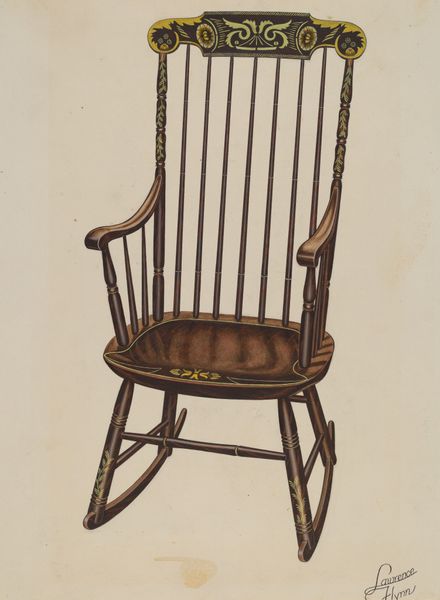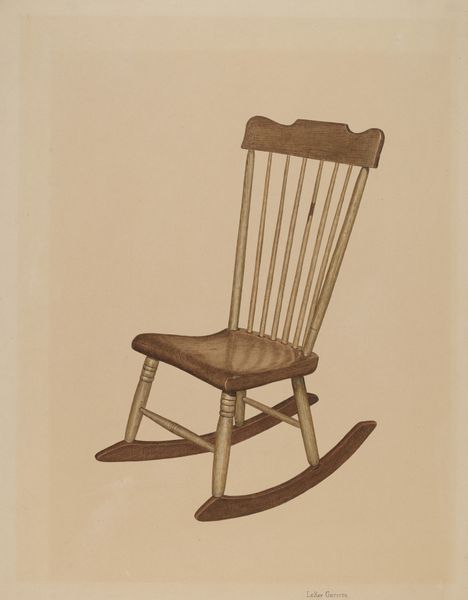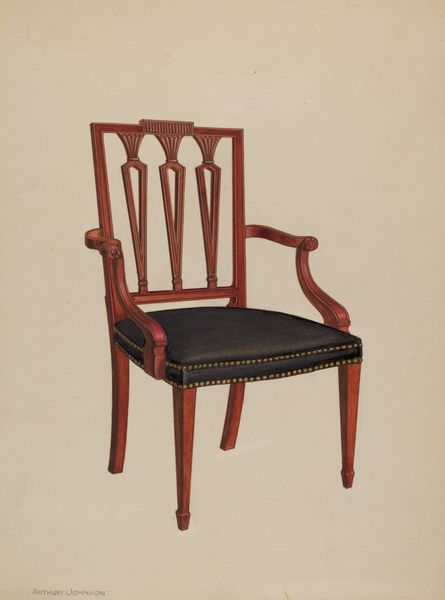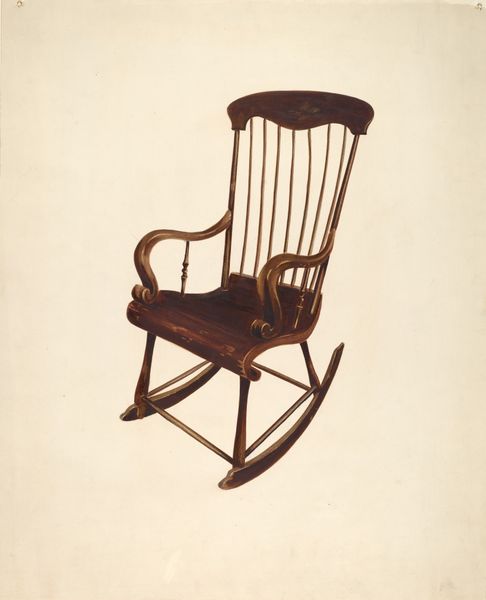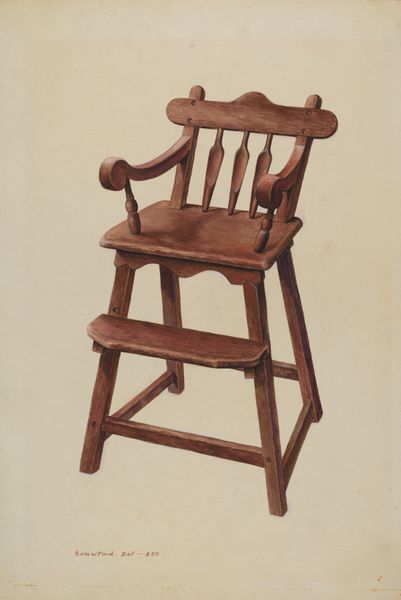
drawing
#
drawing
#
oil painting
#
watercolour illustration
#
watercolor
#
realism
Dimensions: overall: 41.6 x 36.6 cm (16 3/8 x 14 7/16 in.) Original IAD Object: 31 1/2"high; 14"wide; 15"deep. Rockers 27"long.
Copyright: National Gallery of Art: CC0 1.0
Editor: So, this is Leonard Battee’s “Chair,” from around 1937, made using drawing as a medium. The wood texture almost looks tangible! How can the materiality and craft of this work impact how we understand its meaning? Curator: Exactly! Instead of viewing it as a mere depiction, consider it as a record of labor, production, and consumption during the 1930s. We can consider where Battee found the materials to draw, and the value imbued on craftsmanship itself at a time of increasing industrial production. Do you think the style chosen impacted this, also? Editor: I think it's interesting he didn't attempt something abstract or modernist, given the date. But sticking with Realism allows him to make the wood and craftsmanship really stand out. The choice elevates it above just being something functional and perhaps calls the viewer to look closer at all the labour it embodies. Curator: Precisely. Also think about who this chair may have been for? The value a person put on having a comforting rocking chair in their home. Was it for work-weary individuals, or could this be viewed as a symbolic object representative of that era? Editor: I never would have considered this image through such a lens. Thinking of the materials and labor and the chair as a signifier is fascinating! I think my perspective on how the chair signifies work weary people really adds something new to my perspective of it. Curator: Indeed. Focusing on materials helps us understand artistic choices beyond aesthetics and connects them to social and economic contexts, as we examined. And your perspectives on labor further solidifies our combined understanding.
Comments
No comments
Be the first to comment and join the conversation on the ultimate creative platform.


